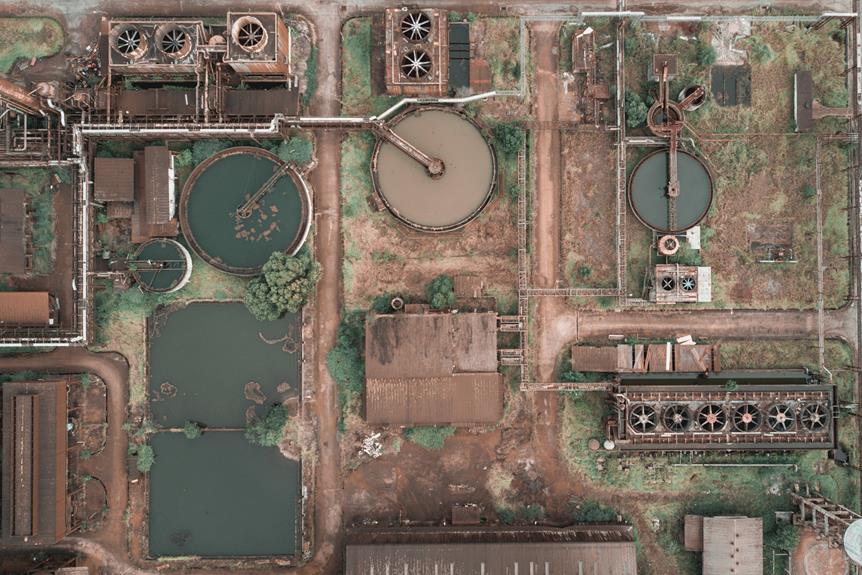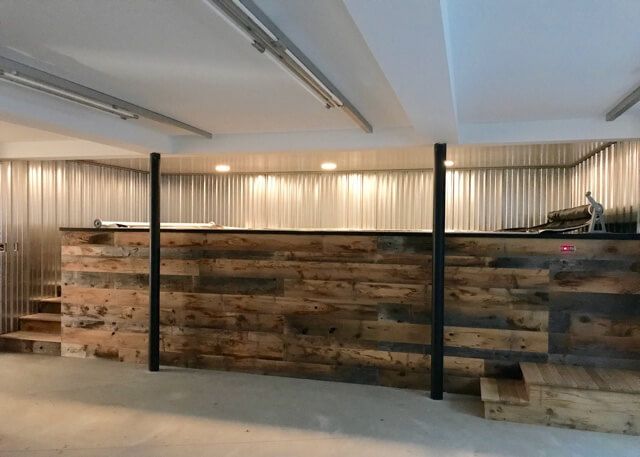Are you ready to weatherproof your pool pump and filter for the winter? Don't let freezing temperatures and harsh conditions damage your equipment. In this article, we'll walk you through the essential steps to winterize your pool pump and filter, ensuring their protection and longevity. You'll learn how to safeguard different filter types and save on energy costs. With our expert advice, you'll confidently prepare your pool equipment for the colder months ahead. Let's dive in and get your pump and filter winter-ready!
Key Takeaways
- Winterizing your pool pump and filter is crucial for protecting your equipment and extending its lifespan.
- Proper winterization can save you time and money, as well as prevent potential damage to pipes and components.
- It is important to winterize your pool pump and filter when temperatures consistently fall below 65°F.
- Running the pump alone may not prevent freezing, so it is better to properly winterize your equipment for colder winters.
Step-by-Step Guide to Winterizing Your Pool Pump and Filter
To winterize your pool pump and filter, you should begin by turning off the pool pump and removing it from the power source. This step is crucial to ensure your safety and prevent any accidents during the winterization process. Many pool owners make the mistake of neglecting this step, which can result in electrical hazards or damage to the pump.
Once the pump is safely disconnected, you can proceed with draining the water from the pump and cleaning the strainer basket. This will prevent any build-up of debris or contaminants that could potentially damage the pump over the winter months. It is important to remove any leaves, twigs, or other debris from the basket to maintain its efficiency.
Next, you will need to disconnect the filter hoses attached to the pool. This will allow you to properly clean and store the filter system. Common mistakes to avoid at this stage include not properly draining the water from the filter tank and not cleaning the skimmer basket. These oversights can lead to water freezing within the system, causing damage.
After disconnecting the hoses, it is recommended to open the air relief valve and remove the drain plug to clear out any remaining water. This step ensures that there is no water left in the system that can freeze and cause damage. It is important to let everything dry thoroughly before storing it in a safe, dry place.
To maintain your pool pump and filter during the winter months, there are recommended winterization products available. These products include pool cover pumps, winterizing plugs, and pool antifreeze. Pool cover pumps help remove excess water on the pool cover, preventing it from accumulating and causing damage. Winterizing plugs are used to seal off the pool's plumbing lines, preventing any water from entering and potentially freezing. Pool antifreeze is added to the plumbing lines to provide protection against freezing temperatures.
Winterization Process for Different Types of Filters
When winterizing a sand filter, make sure to disconnect the circuit breaker and drain the water from the pump before cleaning the skimmer basket. Here's a step-by-step guide to winterizing different types of filters:
- Cartridge Filter: Drain the water from the pump, clean the strainer basket, disconnect filter hoses, and let the cartridge filter dry completely before storing. This ensures that no water remains in the filter, preventing any potential damage from freezing temperatures.
- Sand Filter: Turn off the pool pump, disconnect the circuit breaker, drain the water from the pump, clean the skimmer basket, backwash the filter, drain the water from the filter tank, remove filter hoses, let everything dry thoroughly, and cover with a pool tarp. This comprehensive process ensures that all water is removed from the filter, preventing any potential damage or clogging.
- D.E. Filter: Turn off the pool pump, disconnect the circuit breaker, pump the bump handle on the filter cap, drain the water from the filter pump, move the bump handle to drain completely, disconnect all connections, rinse the filter grids, let everything dry thoroughly, reassemble, and store. This meticulous process ensures that the D.E. filter is thoroughly cleaned and dried, preventing any potential issues during the winter months.
- Importance of Winterizing: Proper winterization is crucial to protect your pool pump and filter from freezing temperatures, which can lead to costly repairs. Winterizing also prevents stagnant water that can cause rust, corrosion, and the growth of mold and bacteria. Additionally, winterizing helps save money on energy costs and makes it easier to open the pool again in the spring.
Importance of Winterizing Your Pool Equipment
Proper winterization of your pool equipment ensures that it remains in optimal condition and avoids costly repairs. Winterizing your pool pump and filter is an essential step in maintaining your pool's longevity and functionality. By taking the necessary precautions, you can protect your investment and enjoy a hassle-free pool opening in the spring.
To emphasize the importance of winterizing your pool equipment, let's take a look at the benefits of hiring a professional for pool winterization. Not only do professionals have the knowledge and experience to properly winterize your equipment, but they also have the necessary tools and equipment to get the job done efficiently. Hiring a professional ensures that every step of the winterization process is done correctly, reducing the risk of damage and costly repairs.
On the other hand, there are common mistakes that pool owners should avoid when winterizing their pool equipment. These mistakes can lead to unnecessary damage and costly repairs. Some of these mistakes include not properly draining the water from the pump and filter, failing to clean the strainer basket, and neglecting to disconnect the filter hoses. By avoiding these mistakes and following the proper winterization steps, you can ensure that your pool equipment is protected during the winter months.
Best Time to Winterize Your Pool Pump and Filter
The best time to winterize is when the average temperature falls below 65°F. By taking the necessary steps to winterize your pool pump and filter, you can avoid potential risks and save energy in the process.
- Potential risks of not winterizing your pool pump and filter:
- Water expands when it freezes, which can cause damage to pipes and components.
- Stagnant water can lead to rust, corrosion, and the formation of mold and bacteria.
- Neglecting winterization can make it more difficult to open your pool again in the spring.
- Not winterizing your pool equipment can result in higher energy costs.
- Energy saving tips for winterizing your pool equipment:
- Turn off the pool pump and remove it from the power source to conserve energy.
- Drain the water from the pump and clean the strainer basket to prevent clogs.
- Disconnect the filter hoses attached to the pool to avoid freezing and potential damage.
- Open the air relief valve and remove the drain plug to clear out any remaining water.
By following these energy-saving tips and properly winterizing your pool pump and filter, you can protect your equipment, extend its lifespan, and avoid costly repairs. It is essential to take these steps when the average temperature falls below 65°F to ensure optimal condition for the coming winter months.
Now that you understand the importance and timing of winterizing your pool pump and filter, let's move on to essential tips for winterizing your pool pump and filter.
Essential Tips for Winterizing Your Pool Pump and Filter
To ensure the optimal condition of your pool equipment during the winter months, follow these essential tips for properly preparing and storing your equipment. First, turn off the pool pump and remove it from the power source. Drain the water from the pump and clean the strainer basket to remove any debris. Next, disconnect the filter hoses attached to the pool and open the air relief valve to release any remaining water. Don't forget to remove the drain plug to ensure a thorough clearing of water from the system. Once everything is drained, let it dry completely before storing it in a safe, dry place.
When winterizing different types of filters, there are specific steps to follow. For a cartridge filter, drain the water from the pump, clean the strainer basket, disconnect the filter hoses, and let the cartridge filter dry completely before storing. For a sand filter, turn off the pool pump, disconnect the circuit breaker, drain the water from the pump, clean the skimmer basket, backwash the filter, drain the water from the filter tank, remove filter hoses, let everything dry thoroughly, and cover with a pool tarp. For a D.E. filter, turn off the pool pump, disconnect the circuit breaker, pump the bump handle on the filter cap, drain the water from the filter pump, move the bump handle to drain completely, disconnect all connections, rinse the filter grids, let everything dry thoroughly, reassemble, and store.
By properly winterizing your pool pump and filter, you can avoid common mistakes that can lead to costly repairs. One common mistake is not fully draining the water from the system, which can cause freezing and damage to pipes and components. Another mistake is not cleaning the strainer basket and filter properly, which can lead to rust, corrosion, and the formation of mold and bacteria. Finally, not storing the equipment in a safe, dry place can also result in damage.
Frequently Asked Questions
Can I Use Antifreeze to Winterize My Pool Pump and Filter?
Yes, you can use antifreeze to winterize your pool pump and filter. It's a common practice to protect against freezing temperatures. Before adding antifreeze, make sure to follow proper winterization steps such as draining the water, cleaning the strainer basket, and disconnecting hoses. Then, pour antifreeze into the pump and filter to prevent any remaining water from freezing and causing damage. Pool pump and filter winterization tips include using the appropriate type of antifreeze and consulting with a professional if needed.
How Often Should I Clean the Strainer Basket During Winterization?
During winterization, it is important to clean the strainer basket of your pool pump regularly to ensure optimal performance. Best practices for pool pump maintenance include checking and cleaning the strainer basket every 2-4 weeks, or as needed, to remove any debris that may accumulate. This helps prevent clogging and ensures proper water flow through the pump and filter system. Regular maintenance will help extend the lifespan of your pool pump and filter, saving you time and money in the long run.
Is It Necessary to Cover My Pool Pump and Filter During the Winter?
Yes, it is necessary to cover your pool pump and filter during the winter. Pool pump maintenance is an important part of winter pool care. By covering your pump and filter, you protect them from harsh weather conditions like freezing temperatures and potential damage from debris. This helps extend the lifespan of your equipment and prevents costly repairs. So, make sure to cover your pool pump and filter to ensure their optimal condition when you open your pool again in the spring.
Can I Leave Water in My Sand Filter During the Winter?
Yes, it is necessary to drain the water from your sand filter during the winter. Winterizing your sand filter is important to prevent potential damage from freezing temperatures. Leaving water in the filter can cause the water to expand and potentially crack or damage the filter tank. To properly winterize your sand filter, turn off the pool pump, disconnect the circuit breaker, drain the water from the pump and filter tank, clean the skimmer basket, and let everything dry thoroughly before covering with a pool tarp.
What Should I Do if I Forget to Winterize My Pool Pump and Filter?
If you forget to winterize your pool pump and filter, don't panic! It's not the end of the world, but you'll need to take action quickly. First, turn off the power to the pump and remove it from the power source. Then, drain any remaining water from the pump and clean the strainer basket. Disconnect the filter hoses and open the air relief valve to clear out any water. Finally, let everything dry thoroughly before storing it in a safe, dry place.
Conclusion
As the winter season approaches, it's crucial to protect your pool pump and filter from the harsh weather. Just like a sturdy coat shields us from the cold, winterizing your pool equipment ensures its optimal condition and prevents costly repairs. By following our step-by-step guide and understanding the importance of winterization, you'll save money on energy costs and extend the lifespan of your equipment. So, don't let Jack Frost ruin your pool's health – take the necessary steps to winterize your pool pump and filter today!



